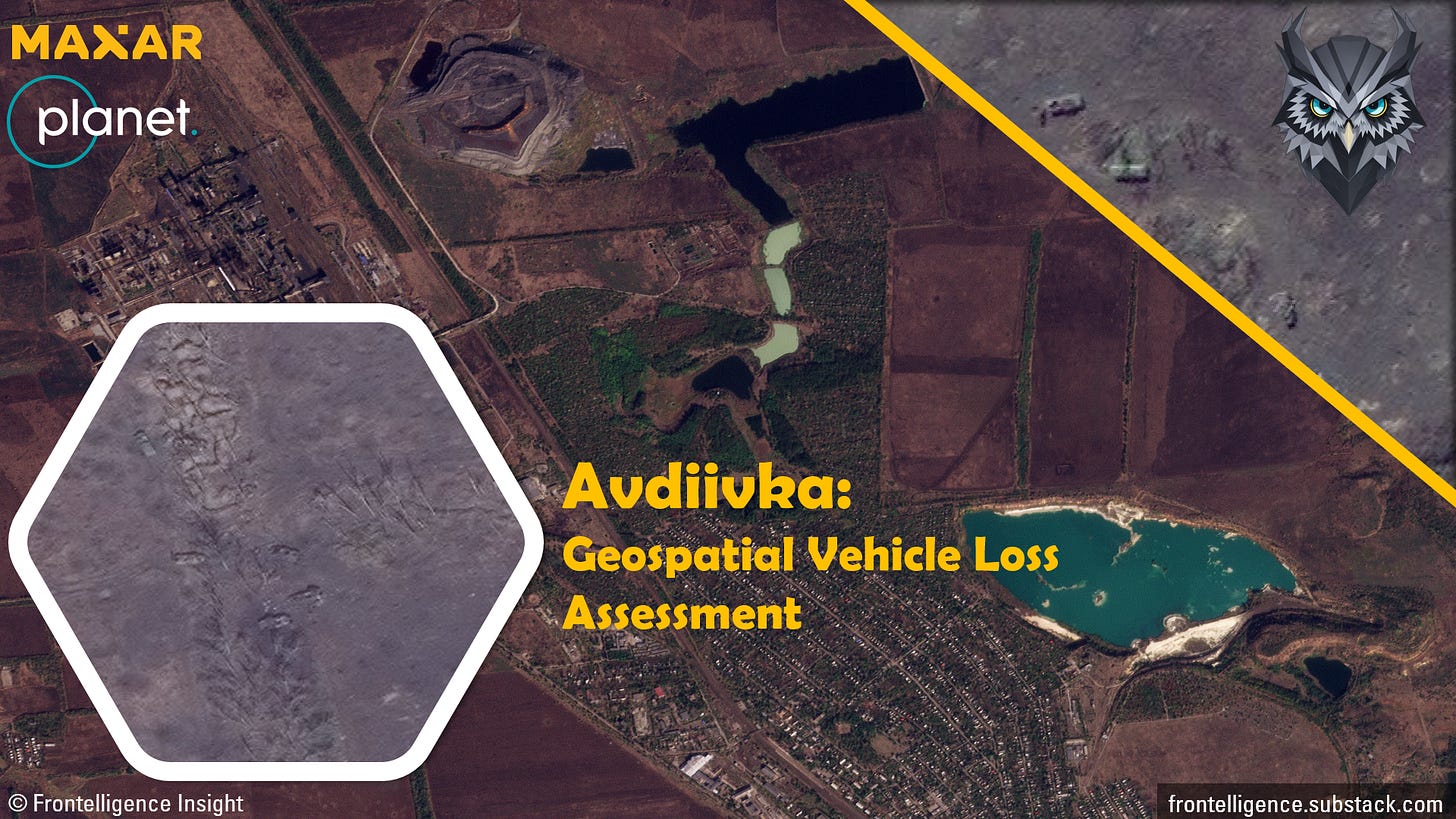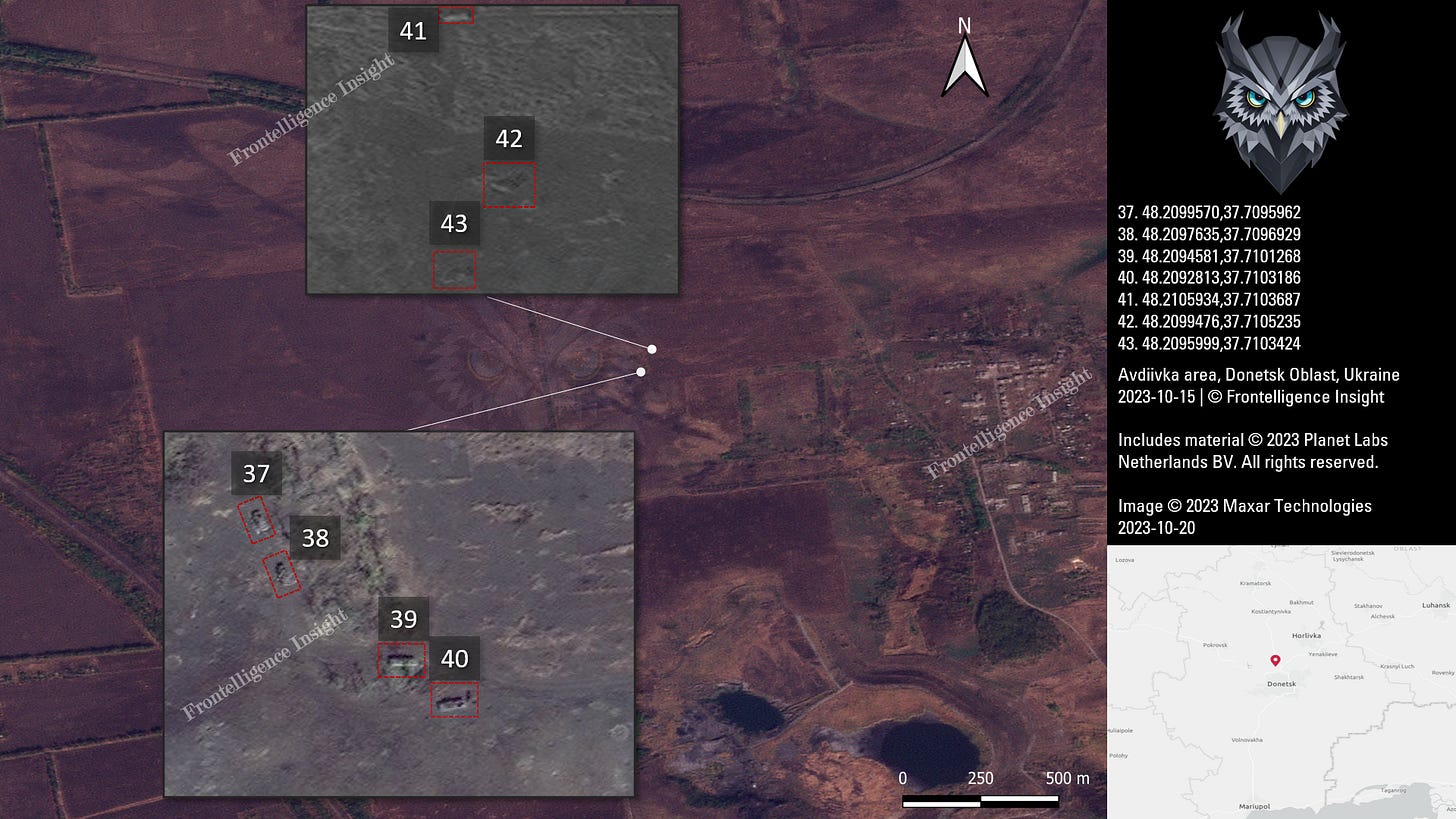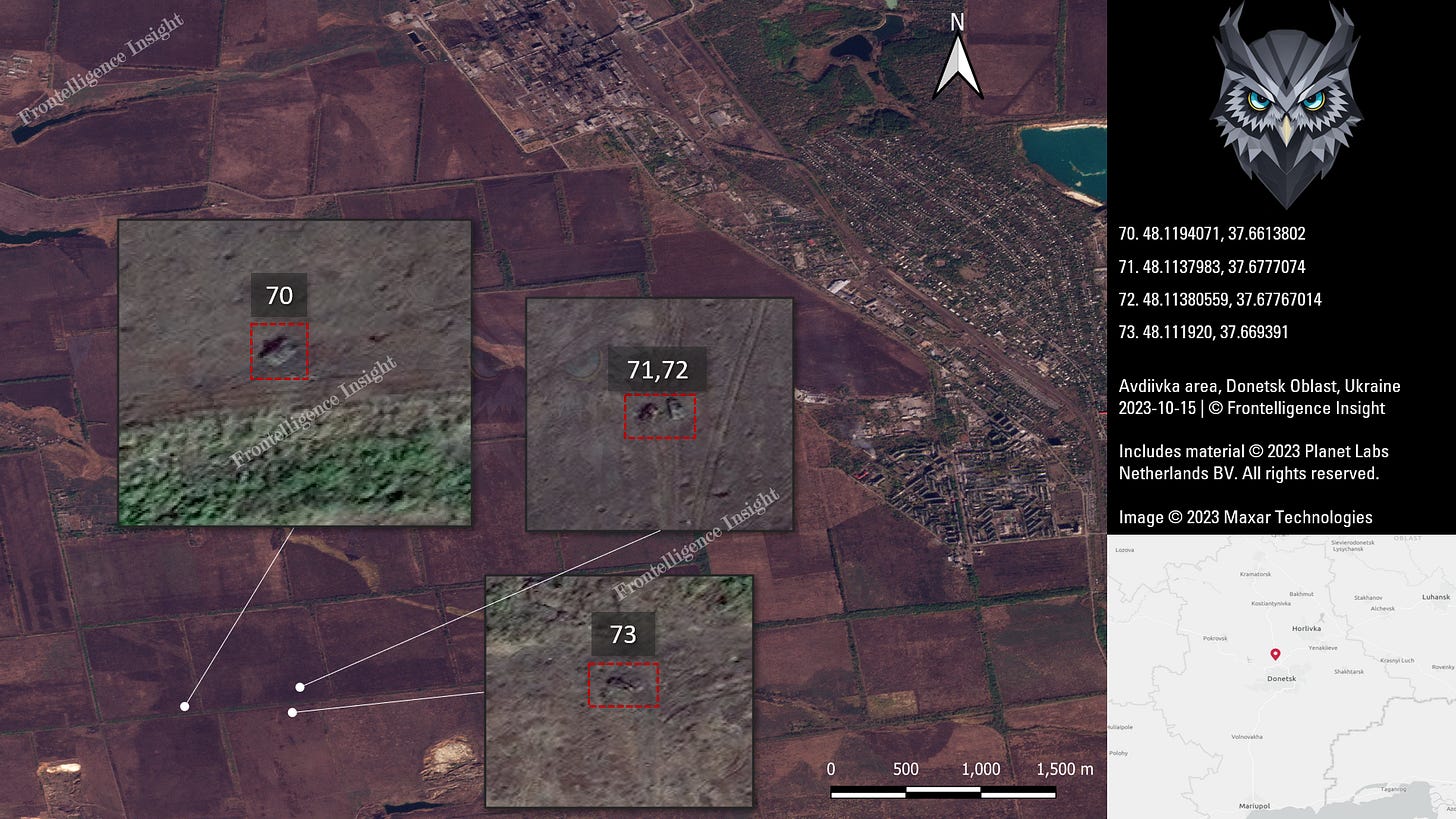After conducting a thorough visual assessment of the available satellite imagery, our team successfully determined the extent of losses incurred by Russian military vehicles in the Avdiivka area in the period from October 10 to October 20. The results reveal that the number exceeds 109, indicating that within the span of a week and a half, Russia suffered the loss of approximately a brigade-sized force.
The actual count of destroyed vehicles is substantially higher. We opted to exclude a minimum of a dozen vehicles with low to medium confidence levels due to the inconsistency in imagery coverage of the area. In some cases, it was simply impossible to definitively determine whether a vehicle had been in the same location for an extended period, was in motion, or had indeed been destroyed.
All new lost vehicles are indicated by a red square on the imagery, while old losses that were already present at the end of September are marked with a white square.
The overwhelming majority of losses were primarily Armored Fighting Vehicles, including BMP-1 and BMP-2 of various configurations, T-72, T-64, and T-80 tanks in different variations, MT-LB, BTRs, and transport vehicles. In total, these losses amount to 109 vehicles.
The scale of the operation, coupled with the participation of multiple brigades, strongly suggests that it is being conducted at the army level. Additionally, we have information regarding Russian reinforcements being deployed to the Avdiivka area, however, we are unable to disclose more at this time.
Despite reports indicating that Russia used old and outdated equipment during the assaults, our team has identified a significant presence of modern and modernized vehicles and equipment being deployed in these assaults. These assets are actively employed in coordinated battalion-level assaults, underscoring the importance of the operation for Russian military command.
Upon analyzing the initial phase of the operation, our team concluded that the enemy had been planning this operation for a significant duration, making it an unlikely sporadic decision. The observed patterns strongly indicate that the Russians allocated substantial time and resources to execute this operation, implying their anticipation of very high losses in pursuit of their objectives.
Notwithstanding incurring substantial losses in mechanized forces during the initial attack, the enemy persisted in employing more mechanized forces to develop the limited success they had achieved. Their objective was to secure dominant positions, cut off logistical routes, and seize control of waste heaps.
The tally of Russian vehicle losses has reached a significant milestone, surpassing the scale of vehicle losses experienced by Russia during the Siversky Donets crossing in 2022. There is a strong likelihood that these losses have already exceeded or will surpass the vehicle losses sustained by the Russian military in the Vuheldar vicinity between November 2022 and April 2023.
According to two independent sources on the ground, the estimated Russian losses in vehicles amount to approximately 200. Nevertheless, it's crucial to underscore that our ongoing research primarily centers around geospatial evidence. Consequently, we have opted not to include this numerical estimate in our analysis as we currently lack the supporting evidence in the form of satellite imagery for it.
However, the situation remains far from stable or victorious. Russian forces persist in their extensive use of guided air-dropped bombs and artillery strikes, supported by the deployment of LMUR (Light Multipurpose Guided Rocket) launched from helicopters such as the Ka-52 and Mi-28. Several indicators suggest that Russians are actively working to adapt their tactics to maintain the operation. This is further confirmed by the deployment of additional resources from other parts of the frontline.
In conclusion, we want to emphasize several key points. This army-level operation, conducted through battalion or battalion-tactical groups, signifies not only the gravity of the operation but also shows an attempt to shift the strategic initiative from the Ukrainian side to the Russian side. The sustainability of these losses is in question, although this approach mirrors what we've observed in previous battles like Mariupol, Vuhledar, and Bakhmut. In these instances, the Russians committed significant human and material resources and were willing to accept substantial losses—what Western military standards might consider as unacceptable—to achieve their operational objectives. The operation originally aimed for a faster outcome and the advancement of Avdiivka through its flanks, but the resistance and skills exhibited by Ukrainian defenders have proven to be far more formidable than the Russians had anticipated in their plans.
In our methodology, we aimed to achieve a high level of confidence in our calculations. To accomplish this, we conducted a rigorous analysis involving four distinct sets of imagery taken before, during, and after the assault. This comprehensive approach allowed us to exclude lost vehicles prior to October 10th and those that remained active or in motion.
We've aimed to keep the margin of error within 7%, which provides a reasonably accurate count. Potential sources of error may include accidental duplications, misinterpretation of objects, and misidentification of the faction operating the vehicles.
It's important to remember that the imagery we used does not cover the entire area, resulting in the omission of a substantial number of losses that have been geolocated by OSINT projects using photo and video evidence. Our analysis is exclusively based on satellite imagery, which means that certain regions, such as the western part of Vodyane, fall outside our assessment scope.
Please consider subscribing to our premium service to support us or donating via BuyMeAcoffee. We rely on public donations as we do not have private or governmental funding. Your support is greatly appreciated and helps us continue our work.



























I really much prefer this format to trying to follow along on Twitter.
Really clear, professional analysis. Thank you.